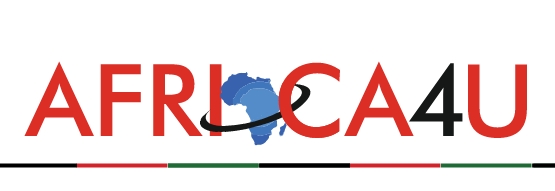(4 Minutes Read)
U.S. President Donald Trump has imposed tariffs on African nations as part of his “Liberation Day” initiative to reshape global trade, in line with his America First Policy. Apart from introducing a universal 10% baseline tariff on all imports into the U.S., he imposed reciprocal tariffs on countries based on respective average customs duties charged by the respective countries. As if to give respite from a steep increase, the Trump Administration said that its reciprocity tariff is halved.
Among the most affected African nations are: Lesotho (50% tariff), Madagascar (47%), Mauritius (40%), Botswana (37%), Angola (32%), South Africa (30%), Namibia (21%), Zimbabwe (18%), Zambia (17%), and Malawi (17%). North African countries are also impacted, with Libya facing a 31% tariff, Algeria 30%, and Tunisia 28%. In West Africa, the Ivory Coast is hit with a 21% tariff, while Nigeria faces 14%. China, the largest trading partner for Africa, has been hit with a 54% tariff.
These new tariffs seem to override the tariff-free provisions of the African Growth and Opportunity Act (AGOA), which has facilitated trade with Africa for years and is set to expire this September this year. Experts have noted that the U.S. has significant trade deficits with Africa’s major commodity exporters, with South Africa’s exports to the U.S. predominantly consisting of precious metals, diamonds, and platinum, while Nigeria, Algeria, and Angola mainly export oil.
Lesotho’s trade with the U.S. represents about 28% of its total trade, with imports from the U.S. valued at USD 237.3 million compared to only USD 2.8 million in exports in 2024. The 50% tariff could greatly affect Lesotho’s economy, where over 10% of GDP is tied to trade with the U.S. Lesotho’s garment factories have supplied jeans for notable American brands like Levi’s and Wrangler under AGOA, which allows certain goods to enter the U.S. tariff-free.
AGOA, established by Bill Clinton in 2000, aimed to boost African economies and create jobs, but these tariffs jeopardise its future. South Africa is listed among countries labeled as “worst offenders” in trade practices, facing a discounted 30% tariff from the U.S., despite charging 60% on U.S. imports. South Africa’s top export to the U.S. is platinum, which may be exempt from tariffs, but its second-largest export—cars—will face significant tariffs. Additionally, a 25% tariff on foreign-made cars has been introduced, with the U.S. as the second-largest market for South African vehicles after Germany.
The new tariffs, effective from April 5, could severely impact the existing economic relationships between the U.S. and countries like South Africa, Nigeria, and Kenya. This move comes amidst U.S. aid cuts that have already strained vulnerable nations. Relations between the U.S. and South Africa have worsened since Trump took office, particularly over criticisms of South Africa’s land reform policies. Economists view these tariffs as a significant shift from the previously more open trade policies characterizing U.S.- Africa relations.
Experts are divided about the impact of the tariff increase. There is a school of thought which believes that coupled with aid cuts, these measures will have a severe erosion of fund flows from the US as export receivables. There is an opposite camp, which believes that these measures will open up scope for switch trade, which means that at least some countries will move to destinations that have lesser tariffs. For instance, Lesotho can move its exports to Zimbabwe or Zambia, where the retaliatory tariff is much lower than its 50% at 17% and 18%, respectively.
Read Also;
https://trendsnafrica.com/eu-hints-at-taking-retaliatory-steps-against-us-on-tariff-war/
The US businesses also can act smart as they had during the peak of trade war days. Soya farmers in the US who were exporting to China changed their strategy by first switching over to Latin American countries and from there shipped to China. Many feel that such arrangements might trigger Trump to overcome unilateral tariff imposition.





